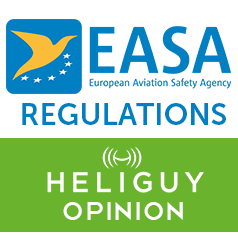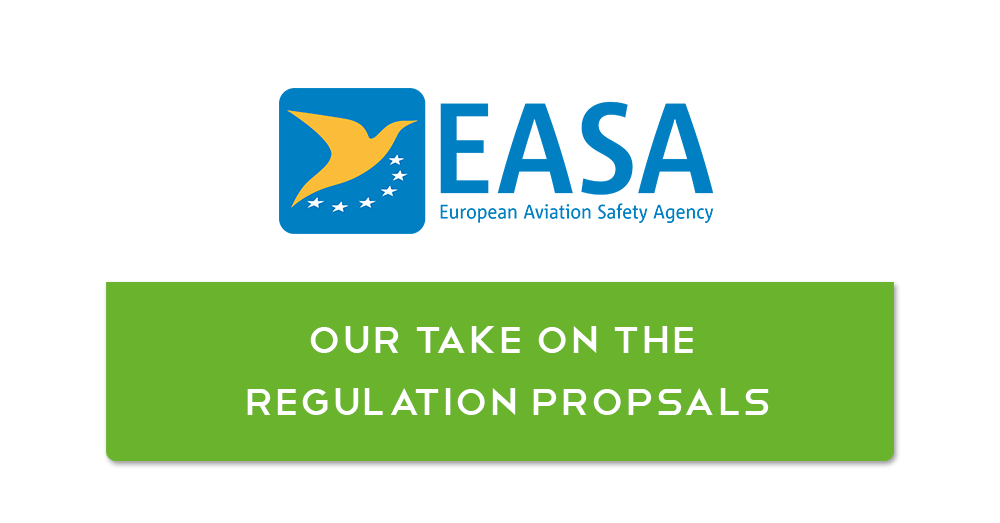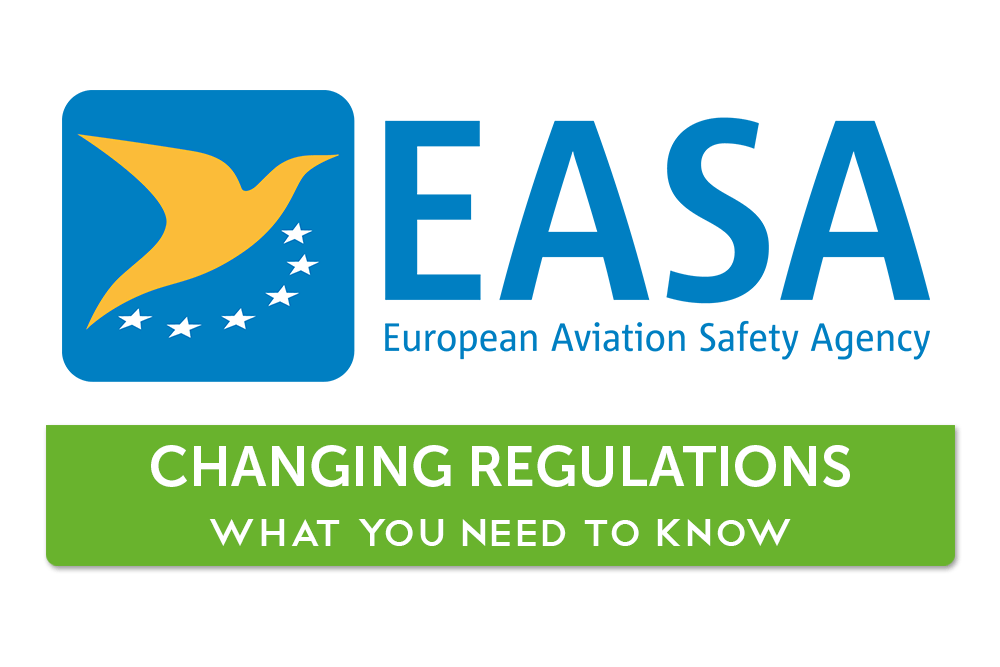
News
Our Take on the Proposed EASA Regulations
Heliguy runs through the key points relating to the EASA regulations and offer up our take on what you can expect. ... Read More

READ OUR INITIAL BLOG ABOUT THE EASA REGULATION PROPOSAL Learn more about the different categories and risk factors involved.
In our capacity as a CAA approved NQE, as well as a member of the drone community since its inception, Heliguy has taken a look through this proposal to give you our opinion on what they may mean for the industry moving forward.
THE REGULATORY PROPOSAL

The 'OPEN' Category
Official Description: "LOW RISK - No authorization is required to operate the unmanned aircraft, as long as forbidden or restricted drone zones, as defined by the national aviation authority (NAA), are respected. Safety is ensured through compliance with operational limitations, mass limitations as a proxy of energy, product safety requirements, and a minimum set of operational rules." This will be where many drone users will find themselves placed on the EASA scale. This category covers everything from smaller, entry-level drones and model aircraft like those made by Hubsan, to more widely used models such as the DJI Phantom and Inspire ranges. Here is how the EASA guidelines describe the first three categories:
OPEN Subcategory A0: ‘Toys’ and ‘mini-drones’ < 1kg Any drone sold as a toy or consumer product with a mass below 1 kg could comply with the applicable product safety Directive and shall limit performance to assure flight below 50m above ground and local operation or alternatively the means to automatically limit the altitude and the airspace they can enter. — Operation shall be performed below 50m above ground. OPEN Subcategory A1: ‘Very small drones’ < 4kg Any drone sold as a consumer product which is heavier than 1 kg could comply with the applicable general product safety Directive and shall have the means to automatically limit the airspace it can enter and the means to allow automatic identification. Drones operating in the ‘limited‑drone zones’ shall have active identification and up‑to‑date geofencing capability enabled. For any operation over 50m above ground, the pilot needs to have basic aviation awareness. Any failures, malfunctions, defects or other occurrences that lead to severe injuries to or fatalities of any per‑ son need to be reported. OPEN Subcategory A2: ‘Small drones’ < 25kg Any drone sold as a consumer product which is heavier than 4kg could comply with the applicable general product safety Directive and shall have the means to automatically limit the airspace it can enter and the means to allow automatic identification. Operation in the ‘limited‑drone zones’ is not permitted in the ‘open’ category for drones with a take‑off mass above 4kg. For any operation over 50m above ground, the pilot needs to have basic aviation awareness. — Any failures, malfunctions, defects or other occurrences that lead to severe injuries to or fatalities of any per‑ son need to be reported to the Agency.
What You Need to Know: Subcategories 0, 1 and 2
The majority of operators (i.e. aerial photographers and videographers) will fall under this classification because of the aircraft most prevalently used such as the DJI Phantom and Inspire series which do not meet the requirements for Cat 3. Under this proposal, these categorisations will no longer be required to undertake training courses to operate professionally, however, although this may seem like a shortcut to commercial operation, this will pose problems as aircraft insurance is mandatory and insurance companies require evidence of competency. Because of this, these rules are highly unlikely to be adopted in the UK. It's not a total catch 22 though as, here at Heliguy, we have an extensive understanding of the drone insurance market and are in a position to offer fast-track competency-based courses to give pilots evidence to present to their selected provider and ensure that everything remains above board no matter what comes of this proposal.
...
There is also a fourth subcategory that requires some explanation:
What You Need to Know: Subcategory 3
This is the category that most people will want to fit into however it is likely to be expensive due to the craft requirements and documentation that needs to be implemented. Those looking to apply for Cat 3 classification will require a full training course such as the PfCO's currently on offer through NQEs such as Heliguy. As for the aforementioned aircraft requirements, to operate professionally under Cat 3, you'll require something along the lines of the DJI Matrice 600 with its triple redundancy and A3 Pro flight controller to meet the levels of safety necessitated by EASA's guidelines. This category currently allows for operating altitudes of up to 500ft which would place the SUA in very close proximity to general aviation airspace which shares the same lower limit. It will be interesting to see how this conflict will be resolved as the regulations continue to evolve
Industry Reaction
Some of the most vocal advocates for changes to these rules have been the drone racing community who will be hit heavily by the EASA's crackdown on 'custom builds'. Dave Phipps, Chief Executive of the BMFA (British Model Flying Association) has recently sent an email to concerned members stating: "EASA’s intention was to implement rules which would have minimal impact on RC and they believed that they had achieved this through the provisions of Article 15. However, I disagreed with them. The EASA rulemaking team were taken aback by my response and invited me (along with the FAI) to meet with them. They acknowledge that they have not got it right for model flyers and that there remains a lot of work to do. They have also invited us to work with them directly and suggest revisions which would make the proposals workable." "In parallel (again through Europe Air Sport) I have written some proposed amendments to EASA’s Basic Regulation which have been tabled by a German MEP. The proposals would introduce definitions for model flying and effectively place us in the same Annex as amateur-built aircraft (and therefore under national control and free from EASA regulation). The amendments were due to be heard on the 10/11 October but have now been deferred until 9/10 November. Europe Air Sports has a professional lobbyist in the European Parliament who is very active on our behalf directly lobbying the relevant MEPs_. I am also working in collaboration with colleagues from other Associations throughout Europe to ensure that they lobby their own MEP’s directly too."_ "In terms of writing to MP’s & MEP’s as Simon Dale was suggesting, this would be largely wasted endeavour at this stage as the majority of them are not involved. Writing to the specific MEP’s on the European Parliament Transport & Tourism Committee (TRAN) to seek their support for the proposed amendments may be more useful, but we already have a good level of support and there is some concern that if they get a large amount of correspondence then it may ultimately be counterproductive and cloud the issue at a time when we need to present a very clear message." "BFPVRA will continue to work closely with BMFA to ensure the best outcome for our sport, but right now the best course of action may be just to sit tight and let the process play out. It won’t hurt to get the message out to as many flyers as possible but if we overwhelm the EASA and parliament members with irrelevant hyperbole then we risk clouding the issue, which would be counterproductive." As a snapshot, this offers a great insight into the attitudes surrounding these proposed regulation changes. We shall see in the coming months whether these voices are heard in Europe and will continue to keep our customers updated as we find out more.
OUR TAKE

The new regulations should reduce overall costs and administrative requirements if you're able to operate within the guidelines for subclasses 0, 1 and 2
If the operator has the correct kit it should make it easier for companies to adapt the tech as 20m is much better than the current 150m on 7-20kg craft
We are still in a position to help trainees gain insurance as the assessment criteria that is required is the same as we currently offer throughout our PfCO process

Equipment will need to be compliant, showing registration details and also including a device to send out flight information which will be hard to integrate on old hardware
Gaining insurance could become a confusing process for those with class 0-2 aircraft as no training is required to fly - however, Heliguy can offer support with this issue
The regulations look set to hinder custom built aircraft which could have a serious effect on the development of UAV tech in the UK as they will have to go to proprietary technology
Despite the overwhelmingly negative response to these proposed changes, it's not all doom and gloom. Heliguy is in a great position to adapt alongside these new regulations by supporting our customers with the guidance, equipment and training they need. Our in-house technical team are capable of ensuring aircraft are up to code and will be able to make any necessary changes, not to mention our highly experienced training staff who offer up industry leading courses which set pilots up on their first steps towards commercial SUA operation. As a growing company with an extensive understanding of the ecosystem we inhabit, we have the ability to effectively preempt or, at the very least, stay up to date with all of the latest trends and changes to SUA legislature. We will continue to monitor the EASA guidelines as they develop and will provide updates with any information that affects our customers and trainees.
…
Keep checking back to Heliguy’s Insider blog for more information regarding the ever-changing regulatory landscape and, of course, the latest news from the drone industry.
